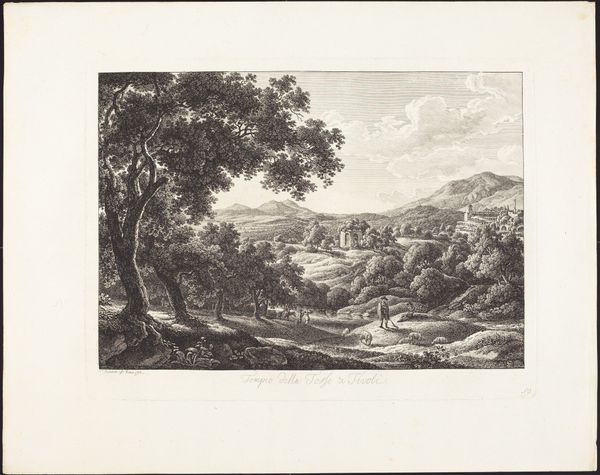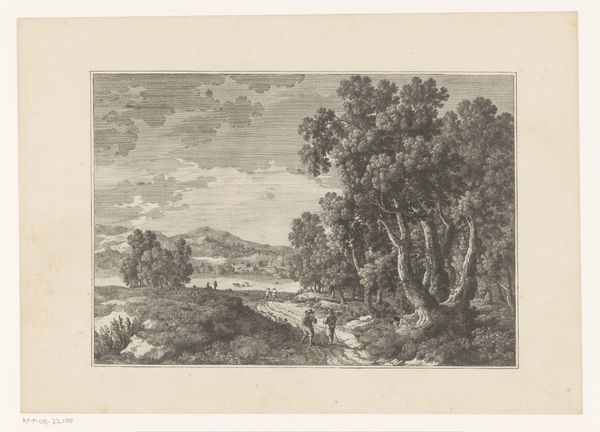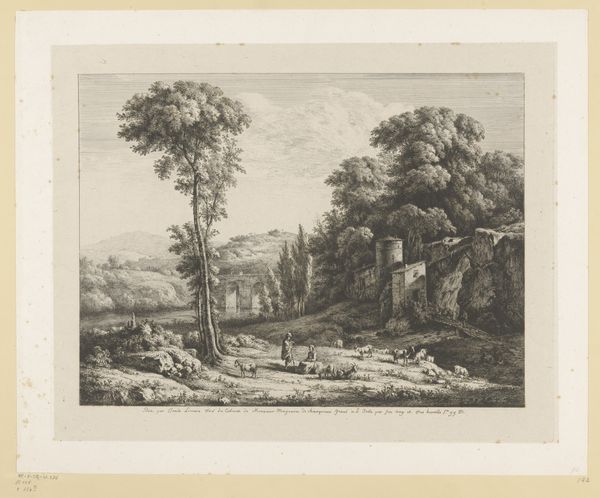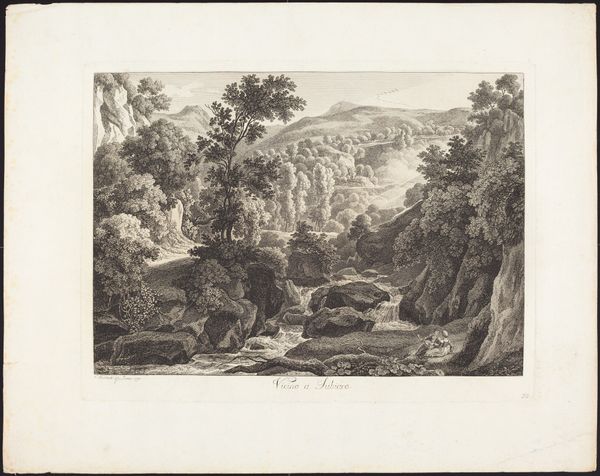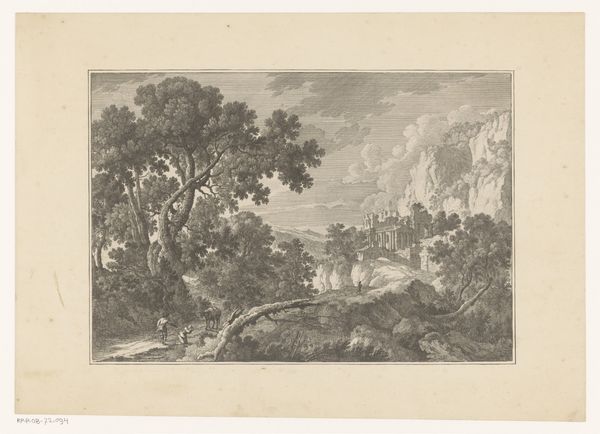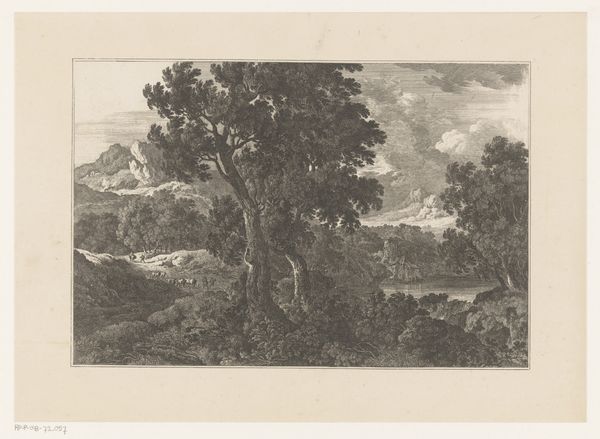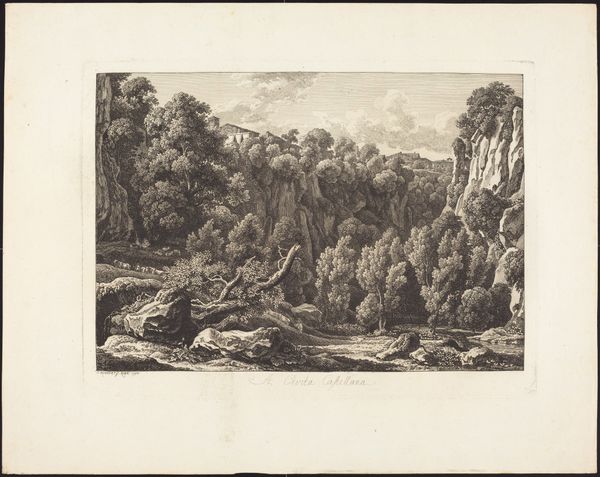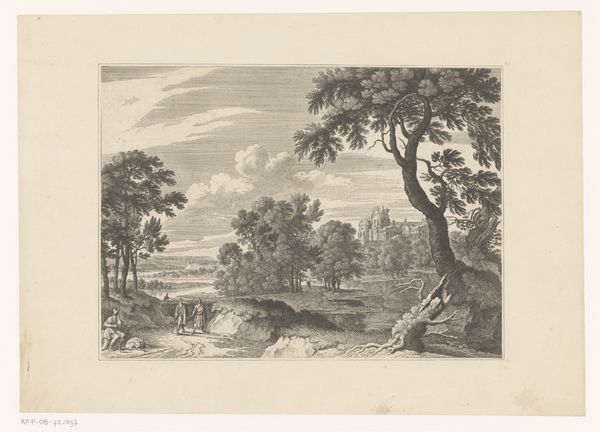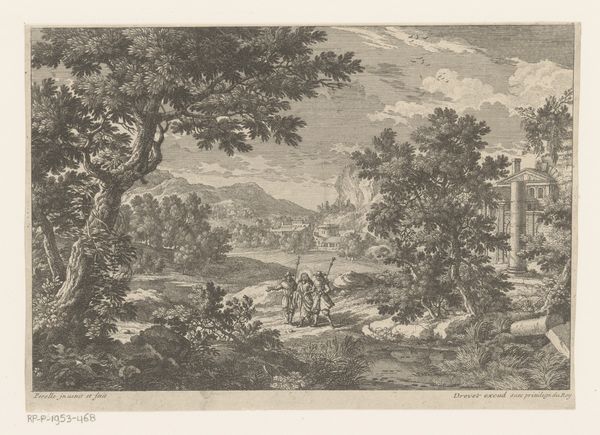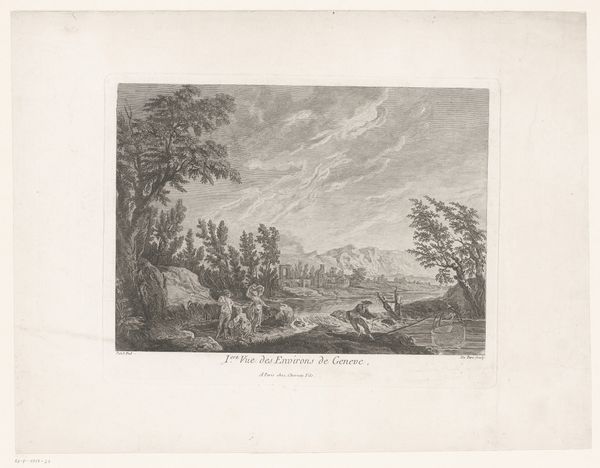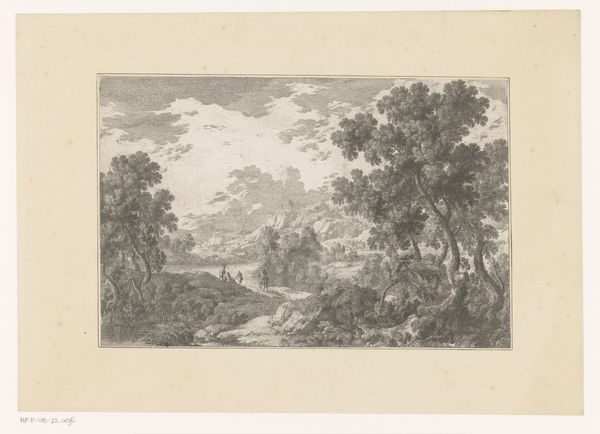
print, etching, paper
#
neoclacissism
#
ink paper printed
# print
#
etching
#
landscape
#
paper
#
line
#
academic-art
Dimensions: plate: 28.6 x 37.6 cm (11 1/4 x 14 13/16 in.) sheet: 39.1 x 49.1 cm (15 3/8 x 19 5/16 in.)
Copyright: National Gallery of Art: CC0 1.0
Curator: Here we have Johann Christian Reinhart's "Aricia," an etching from 1793. It depicts an idyllic landscape scene, rendered in delicate lines and tones. Editor: It strikes me as very serene. The composition leads your eye gently across the landscape to the distant horizon. There's a tangible sense of calm, despite the human figures dotted around. Curator: Yes, the figures certainly animate the scene. Reinhart was working in a neoclassical style, so this pursuit of an idealized landscape is quite deliberate, reflecting a yearning for harmony. It also points to his political conservatism in light of the revolution in France at the time, perhaps even as a kind of utopian yearning. Editor: I wonder, though, for whom this ideal was constructed. If we dig a little deeper, what kind of narratives about the role of people and particularly about power are inscribed within this vision of a calm and ordered nature? And to whom does this order really appeal? The etching does also somewhat romanticize rural life in this area, right? Curator: Precisely! These idealized visions served a very specific function. Remember the socio-political climate of the late 18th century, particularly the rise of bourgeois culture and its obsession with refined aesthetics and this search for universal beauty. It does have links with other landscape etchings by artist printmakers of the period as well, if that contextual link is of interest to our listeners? Editor: Absolutely, I'm all about understanding how power shapes seemingly innocuous artistic choices. For me, the formal mastery here can almost mask what these kinds of nostalgic depictions do, and perhaps what they leave out of the frame when considering other possible readings of a location? Curator: These pastoral scenes served a social purpose; they spoke to specific audiences. They created a shared visual language celebrating nature in a controlled way, perhaps as opposed to some notion of wilderness. Editor: Thinking about how we can situate Reinhart's choices with current ecological debates, makes for a potentially productive conversation about this apparently picturesque and idyllic rendering. Curator: Indeed, it allows us to bring both the art and its social context into conversation with contemporary conversations! Editor: This really makes you see how the beautiful and the political are very often two sides of the same coin. Curator: Well, thank you for offering a glimpse into its complex and multi-layered narrative. Editor: A pleasure. It really makes you want to continue reflecting on what landscape representation means and for whom.
Comments
No comments
Be the first to comment and join the conversation on the ultimate creative platform.
